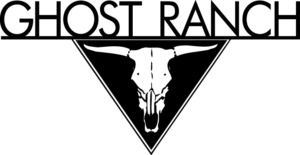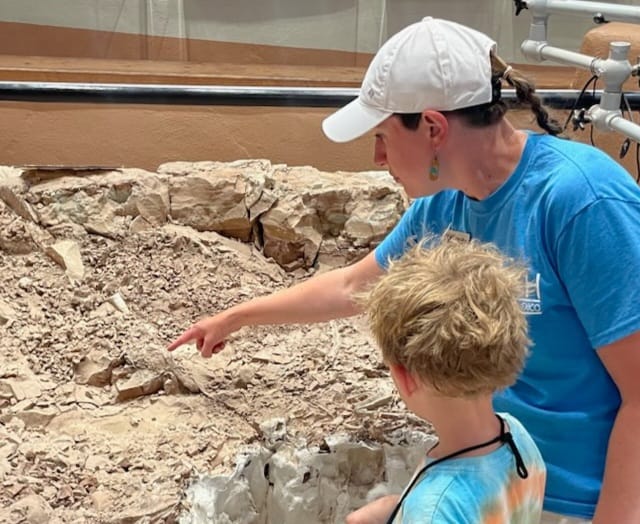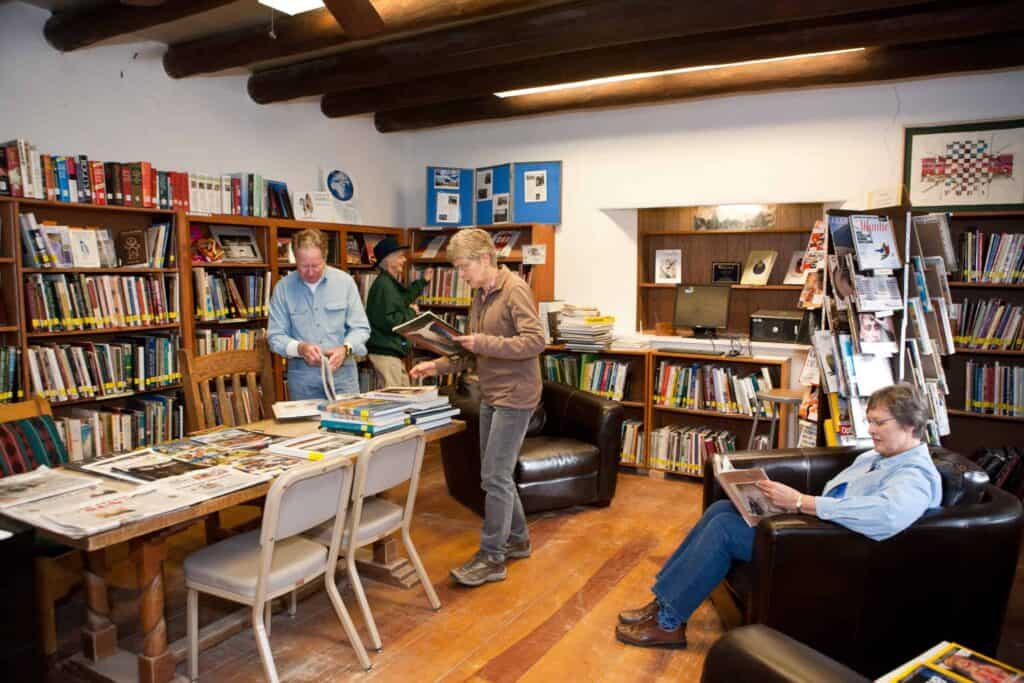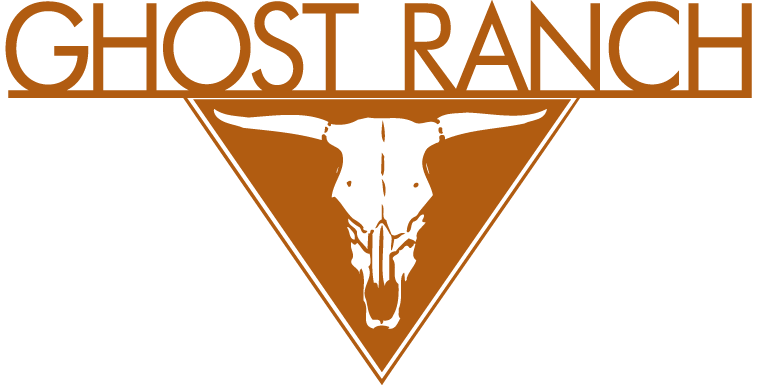MUSEUMS & LIBRARIES
Experience History

MUSEUMS… CONNECTING PAST & FUTURE
Ghost Ranch is host to two museums, the Ruth Hall Museum of Paleontology and the Florence Hawley Ellis Museum of Anthropology, in addition to the Ghost Ranch Library. The Museums of Ghost Ranch are dedicated to advancing research, education and public engagement in Anthropology, Archaeology and Paleontology. Our Ghost Ranch Library is always open. Come explore the past and ponder the future with us.
Did you know you can take a new tour – Ghost Ranch Museums and Landscape Tour – that combines Georgia O’Keeffe, dinosaurs, and Native American arts and culture? Please click the link or choose Tours from the Activities drop down menu…
RUTH HALL MUSEUM OF PALEONTOLOGY

Schedule:
- Tues-Sat: 9am-5pm; Closed 12pm-1pm
- Sun: 1pm-5pm
- Closed Monday
Cost:
The Day Pass fee of $10.00 per adult over 18 grants guests access to both Museums, the labyrinth, and all Ghost Ranch hiking trails. Please check-in at the Welcome Center before visiting the Museums.
Please click here and choose the Day Pass Hiking and/or Museums -Scavenger Hunt add-on to purchase or pay at the Welcome Center before coming to the museums.
Ghost Ranch is a world‐renowned site for Triassic paleontology. Its low, red‐grey mounded hills and washes boast three fossil quarries that are famous among scholars and amateur paleontologists, and a number of other sites where isolated skulls, bones, or skeletons have been found. The three major quarries are the Canjilon Quarry (now situated on U.S. Forest Service land), the Coelophysis Quarry, and the Hayden Quarry. Dozens of different kinds of fossil reptiles, amphibians, and other vertebrates have been discovered, as well as fossil plants and invertebrates. Its quarries have, in recent years, given a whole new perspective to our understanding of how the dinosaurs began to take dominance of the terrestrial realm in the Late Triassic, over 200 million years ago.
The Coelophysis Quarry (or Whitaker Quarry) was discovered in 1947 on the Ghost Ranch property. A unique assemblage of several hundred skeletons of the dinosaur Coelophysis (SEE-low-FY-sis) in addition to other Triassic vertebrates have been found here. This quarry is a National Natural Landmark as designated by the National Park Foundation. Visitors can hike to this site during a visit to Ghost Ranch. Simply follow the Kitchen Mesa Trail on the Ghost Ranch map provided at the Welcome Center.
The third locality, the Hayden Quarry, was discovered during a seminar class at Ghost Ranch in 2002. This quarry has produced more than twenty species of land vertebrates along with charcoalized fossil wood from wildfires that occurred in the Triassic forest. The fossils discovered include Dromomeron and Tawa Hallae (ta-wa-hay-lee), two of the first recognized dinosaurs from North America.
Ongoing fieldwork at the Hayden Quarry has revealed new discoveries. In December 2020, an article was published in the international journal ‘Nature’ featuring a new discovery from Ghost Ranch. This study provides insights into the origin of pterosaurs (flying reptiles that occupied the skies for ~150 million year ago). The scientists, Dr. Martin Ezcurra from Museo Argentino de Ciencias Naturales, and Dr. Sterling Nesbitt from Virginia Tech, concluded that pterosaurs are most closely related to a group of animals called lagerpetids, including this newly-discovered taxon Ixalerpeton, (whose name means “leaping reptile”).
Annually, approximately 2,000-3,000 school children visit the anthropology and paleontology museums on field trips and have the opportunity to learn about paleontology and local cultures by participating in related educational activities.
To arrange an outing for your school group or to schedule a visit to your school, contact Jennifer Borst at jenniferb@ghostranch.org .
FLORENCE HAWLEY ELLIS MUSEUM OF ANTHROPOLOGY
Cara Romero: The Gathering:
Annually, approximately 2,000-3,000 school children visit the anthropology and paleontology museums on field trips and have the opportunity to learn about paleontology and local cultures by participating in related educational activities.
To arrange an outing for your school group or to schedule a visit to your school, contact Jennifer Borst at jenniferb@ghostranch.org .
GHOST RANCH LIBRARY

Schedule:
- Open 24 hours/day
Since the Ranch became the property of the Presbyterian Church in 1955, Ghost Ranch has had a library. This “special library”, which is open 24 hours a day, is a quiet, comfortable center for reading and study, located in an old adobe building just across from the Dining Hall. The historic building was once home to the Robert Wood Johnson family (Johnson & Johnson), built for their stays at Ghost Ranch.
The Library now has over 12,000 volumes, organized by the Library of Congress cataloging system. You can view the Ghost Ranch library collection online via Follett Destiny Library Manager.
Wireless Internet and Online Access to the Collection:
Depending on weather conditions, wireless internet is usually available in and around the Library for those who bring their own laptop/notebook computers. Please note, the Ghost Ranch Library does not loan material through Interlibrary Loan.
Collections focus on program areas of the Ranch, but there is also a large leisure reading collection of American, English, Spanish and other European literature. Other notable subject areas in the collection include:
- Southwest research collection.
- Religion, which includes many current books published by Westminster/John Knox Press and an extensive spirituality collection.
- Art, especially books on watercolor technique.
- Current local newspapers, plus a representative collection of popular magazines in religion and current affairs.
The Library welcomes book donations.
DVD and VHS collection of movies filmed at Ghost Ranch as well as a selection of current movies and documentaries are available for viewing in the library.
Ghost Ranch Library has a large children’s collection. Over one quarter of books checked out during summer months are from the children’s collection. The Children’s Room is also used by the summer children’s activities program for storytimes and related activities.
Considering that Ghost Ranch is one of the few places left which does not have easy access to television (because of the Ranch’s remote location) children often find they have more time to read. The result is that the Children’s Room is the most heavily used part of the Library during the summer.
